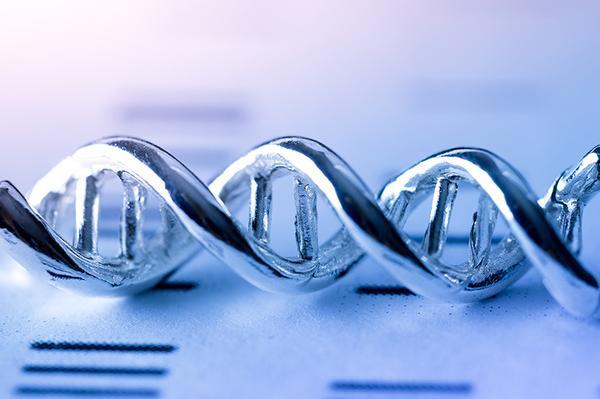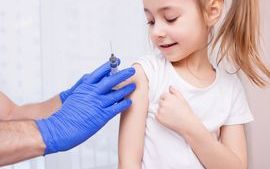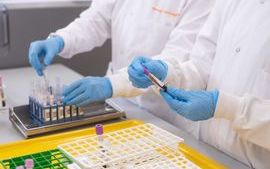- Published:
- 20 January 2025
- Author:
- Dr Rachel Rummery, Dr Liz Hook, Dr Kerry Turner and Dr Jens Stahlschmidt
- Read time:
- 10 Mins
Paediatric and perinatal pathology is one of the United Kingdom’s smallest specialties, with approximately 55 consultants practising in around 20 tertiary centres throughout the UK. Within the Royal College of Pathologists, it is a subspecialty of histopathology. It comprises 3 main areas; surgical pathology, which encompasses a very broad range of specimens from neonates to teenagers; fetal, perinatal and paediatric post-mortems (including both coronial and forensic), and placental pathology.1
Much of the recent discussion around paediatric and perinatal pathology has focused on the workforce challenges it is facing. These are profound; of the estimated 80 consultant posts required nationally, approximately 30% are vacant, with a small pool of around 10 trainees. There is also inequity in the distribution of consultant vacancies, with some centres being relatively well staffed and others having few (or no) paediatric pathologists.
Some trusts have managed to maintain paediatric surgical pathology services with support from general histopathologists with interest or previous experience in paediatric pathology. However, this has not been possible for perinatal pathology, a very specialist area dedicated to the study of the fetus, neonate and placenta, nor for paediatric coronial (or dual-doctor forensic) post-mortems.
This ongoing discussion can obscure the fact that the specialty’s breadth of scope, together with the dedication of its workforce, means it is a highly innovative and forward-thinking specialty. Indeed, some of the challenges it faces have fuelled this innovation.
Challenges
Currently all of the paediatric and perinatal pathology specialty residents are employed in England and Scotland, with no training posts occupied in Northern Ireland or Wales. As with the consultant workforce, there is geographic variation in the training experience, with some registrars alone in their deanery. Due to consultant staffing issues, in some deaneries there is only a single consultant trainer, with some centres only able to offer either the perinatal or the paediatric training curriculum rather than both. This requires training to be delivered across deaneries.
Recruiting residents into the subspecialty has proved challenging for several years. The reasons for this are multifactorial. One issue is that the loss of paediatric and perinatal pathology in a number of deaneries means that delivery of integrated cellular pathology training and opportunities for in-person exposure to the specialty are currently inequitable. Specific mitigation is needed to ensure that this lack of early exposure to the subspecialty does not affect recruitment.
Improving recruitment
Several initiatives have been launched to improve recruitment and ensure equity of training experience in the face of the complexities described above.
An innovative National Training Programme Director post has been established to support the organisation and delivery of training, with the National Training Programme Director working to support training from recruitment through to completion of training (CCT). Alongside this, work is underway by the College subspecialty exam committee on examination structure development. In addition, a national virtual teaching programme has been organised via the British and Irish Paediatric Pathology Association (BRIPPA) using the Pathology Portal. In England, an incentive payment has also been trialled to raise the recruitment profile of the subspecialty.
Finally, as discussed in a 2023 Bulletin article,2 there has been discussion around the possibility of developing a programme to train biomedical scientists in placenta dissection and reporting.
Paediatric pathology is benefitting from digital pathology innovation, as part of the National Pathology Imaging Co-operative (NPIC). NPIC is based in Leeds Teaching Hospitals NHS Trust. It is a unique collaboration between NHS, academia and industry, deploying digital pathology across hospitals in England. It also plans to develop artificial intelligence (AI) tools to help diagnose cancer and other diseases.
As part of this, in line with the NHS Long Term Plan, a national paediatric tumour network is being rolled out to support this specialist service. It aims to enable easy sharing of digital images between paediatric pathology centres to allow faster diagnosis and treatment decisions. It will also help reduce health inequalities in areas with less access to pathology reporting expertise and lead to future educational opportunities.
In July 2024 Great Ormond Street Hospital for Children NHS Foundation Trust (GOSH) went live with the National Pathology Imaging Co-operative (NPIC) digital pathology system,3 the first paediatric hospital to begin using it outside of West Yorkshire. The network will be expanding to other children’s hospitals over the coming months, strengthening the ability of consultants to seek second opinions and ultimately provide a faster diagnosis for children all over the country.
Paediatric pathology has always been a very active adopter of molecular pathology – neuroblastoma was one of the earliest solid tumours to have treatment pathways determined by molecular profiling. Paediatric patients were among the first to benefit from the opportunity for whole genome sequencing (WGS) and the team at the East Genomic Laboratory Hub (GLH) and Paediatric Pathology service in Cambridge were the earliest adopters of this technology as standard of care for solid tumours. Work published by the paediatric solid tumour team in Cambridge and the haematological malignancy service at GOSH have provided an international evidence base for the positive impact of this.4
In addition to the use of molecular pathology in tumours, genomics is of ever-increasing importance in post-mortem work. The National Genomic Test Directory5,6 allows for the use of whole genome sequencing in the sudden death of a child under 18 years old, if the cause of death remains unexplained after the standard sudden infant death syndrome/sudden unexplained death in childhood protocol (including post mortem) has been completed. This requires specialist multidisciplinary team (MDT) discussion of those patients that may be suitable for WGS (including the pathologist, designated doctor for child deaths, and clinical geneticist as appropriate). The appropriate consent needs to be obtained from the family of the deceased.
In fetal post mortems (including stillbirths), genomic techniques, such as single nucleotide polymorphism array, are frequently used when appropriate. Referrals for testing are triaged by the genomic laboratory; testing should be targeted at those where a genetic or genomic diagnosis will guide management for the proband or family.

In both surgical and perinatal work, the workforce challenges have led to 'mutual aid' arrangements in which centres with more capacity take cases to help those centres with less capacity.
As an example, in Leeds we have been performing fetal post mortems (including stillbirths) from Bristol, Leicester and Birmingham, with these arrangements facilitated by NHS England. When capacity has allowed, we have also accepted coronial post-mortems and forensic post mortems from all over England. One of our team is an internationally renowned liver pathologist who carries out primary reporting of liver biopsies and tumours from several other centres. They also undertake central review of hepatoblastoma cases for the Paediatric Hepatic International Tumour Trial (PHITT).
While this additional work places a considerable strain on those centres which accept work from outside their region, it allows the continuation of vital service provision for children and their families.
In paediatric pathology, there are 3 main types of post mortem; perinatal (including fetuses, stillbirths and terminations of pregnancy), paediatric (including coronial) and forensic. These are performed by specialist perinatal and paediatric pathologists, with forensic post-mortems usually performed in conjunction with a Home Office pathologist.
Post mortems aim to determine the cause of death (or fetal loss), audit any antenatal/antemortem findings, consider recurrence risk and provide any relevant genetic information. This helps grieving families, enhances knowledge and aids epidemiology.
For many years it has been standard practice to perform an X-ray (radiograph) before perinatal (and some paediatric) post-mortems, but, more recently, there has been increasing interest in other radiology imaging techniques to examine the internal organs, both as an adjunct to ‘traditional’ post-mortems, and also as a form of ‘digital’ post-mortem.7–10 These modalities include ultrasound, computed tomography (CT) post mortem, magnetic resonance imaging (MRI) and micro-CT. There is also ongoing research into high-field MRI. The images are reported by a radiologist with special expertise in this field, with some specialist centres now offering a range of post-mortem imaging examinations.
In some cases, laparoscopy (keyhole surgery) is used to biopsy organs for microscopic examination – so-called ‘minimally invasive autopsy’. Investigations such as skin biopsy for cytogenetics are also sometimes performed.
Evaluating digital post mortems
Digital post-mortems are not complete in themselves. As in traditional post-mortems, the imaging needs full integration with the clinical history, external examination, placental examination and other investigation results to produce the final report.
Proponents acknowledge that imaging does not replace all of the detailed analysis available following traditional autopsy, but it does provide valuable information for families and can be particularly useful for certain aspects of examination e.g. brain malformations, trauma. There is some evidence to suggest that digital post-mortems may be more acceptable to some parents.
However, digital post-mortems have disadvantages. They are less studied in infants and older children and are limited in their ability to pick up infections, cardiothoracic pathology and the timing of hypoxia. The timing of fetal demise, which can be very important to families and clinicians, is difficult without organ histology. Post-mortem imaging is also currently limited by the availability of scanners and suitably trained radiologists.
Digital post-mortem imaging can be a valuable adjunct to providing accurate diagnosis in fetal, perinatal and paediatric post-mortems. The use of digital post-mortem techniques needs to be tailored to the clinical scenario and availability of resources/expertise. It is well established in some scenarios and is an active research area. In an ideal world, an appropriate imaging modality would be performed whenever it could add value to a post-mortem.
These examples show that, despite workforce challenges, paediatric and perinatal pathology remains an innovative and forward-thinking specialty staffed by committed pathologists, who embrace an open-minded, collaborative and evidence-based approach to their work, to optimise care for children and their families.
References available on our website.
Return to January 2025 Bulletin





